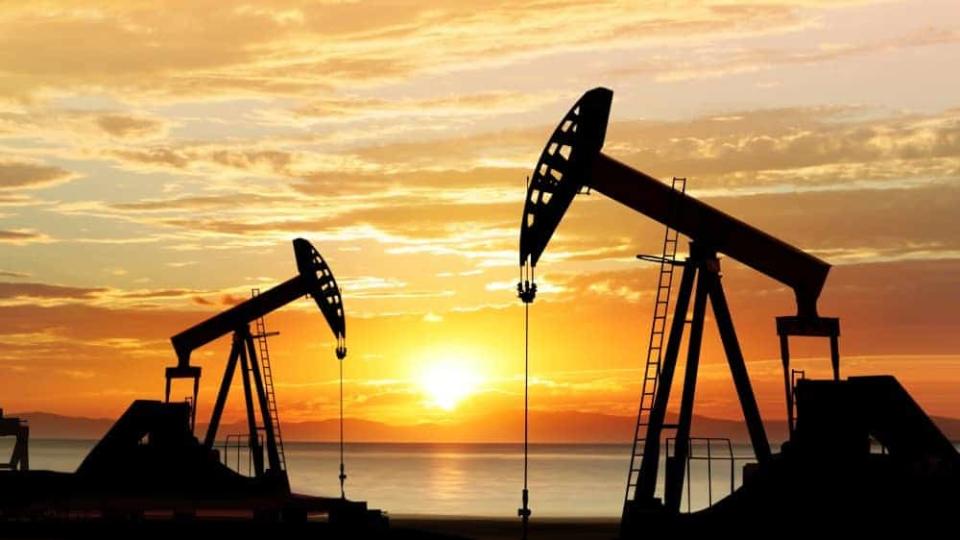Enbridge (TSX:ENB): A Once-in-a-Decade Opportunity to Secure Your Financial Future

I love scooping up shares of rock-solid companies that are beaten down because the market can’t see beyond the fear of dramatic, negative headlines. The energy infrastructure industry is facing an unprecedented moment of negativity, as the press plays out fears of oil spills decimating fragile lakes and other natural systems.
Of course, no one wants environmental damage, but the truth is that pipeline companies delivering oil and natural gas are essential to keeping lights on in North American homes and keeping industries running at full steam.
The stock and the play
Enter Enbridge (TSX:ENB)(NYSE:ENB), the largest diversified energy infrastructure company in North America. Enbridge’s pipelines and related infrastructure safely delivers 25% of North America’s crude oil needs and 20% of the natural gas consumed in the U.S. This means the company is critical to the economic health of this continent and will remain so for decades to come.
The reality is that North America and the rest of the world need more energy, not less. According to Enerdata, there was a 2.1% increase in energy consumption in 2018 versus 2017 for G20 countries, including China, India, Russia, and the U.S.
Even with rise of renewables, fossil fuels are still meeting 80% of the world’s energy demands, with usage of nuclear, wind, solar and geothermal energy hovering at 10% — unchanged in the last decade. This demonstrates that while there is momentum and greater investment in renewables, oil and gas are here to stay for a very long time. These facts should give investors deep comfort around the viability of Enbridge’s long-term business model.
Enbridge has taken a public whipping recently, as its Line 3 replacement project slowed to a crawl due to regulatory hurdles in Minnesota. Built in the 1960s, Line 3 is a critical 1,100-mile crude oil pipeline that goes from Alberta to Wisconsin. Enbridge is replacing the entire pipeline with brand-new pipes to ensure continuance of high safety standards, reduction in future maintenance needs, and fewer disruptions to the environment. But this project has become an environmental lightening rod, and conservation groups cite risks of oil spills as the biggest barrier to them getting on board with this project. The scientific fact is that replacing the aging 1960s pipeline with new, thicker pipe protected by fusion-bonded epoxy coating using advanced welding and construction technology actually significantly reduces environmental risks.
The financial markets are assuming a range of bad- to worst-case scenarios for Line 3, which means either the regulatory process will take another few years to complete, leading to significant cost overruns, or the project is moth-balled due to sustained environmental pressure.
Contrary to these extreme circumstances, Enbridge fully expects all regularity approvals to be completed by the end of 2019 and for the new pipeline to enter service in the second half of 2020. That is fewer than 12 months away, but the market has a hard time seeing that far out these days.
The extremely complex and labour-intensive regulatory environment also means the company has a wide competitive moat. Surprisingly, not a lot of investors have caught on to this important detail. New competitors entering this industry would not have the economic wherewithal, technical know-how, deep resources, and the sheer organizational fortitude required to calmly work through the thoroughly exhausting process and the intense scrutiny it brings.
This means Enbridge does not spend unnecessary energy worrying about competitors; it just focuses on its own goals and keeps its eye on the big prize.
The final verdict
The market has over-reacted to the deluge of negative press around pipelines and the environment, which is the best thing that can happen to smart investors. The ones who tune out the sensationalist, attention-grabbing headlines will prosper because Enbridge has the scale and balance sheet to withstand all these short-term headwinds.
Shares are currently trading at about $44 — the same level as 2016, when the company’s annual distributable cash flow (DCF) was about 3.7 billion versus the expected approximate 8.9 billion in 2019. This juicy DCF growth directly translates to increases in dividends, and Enbridge expects 10% dividend growth through 2020 and 5-7% growth thereafter — in line with steady increases in DCF.
Investors who pick up shares at these levels and forget about them for 20 years will be very happy they did, because their prudent decisions now will secure their financial future.
More reading
3 Reasons Why a Buy-and-Hold Strategy Doesn't Work for Every Stock
Retirees: Give Yourself a Raise With These 3 Passive-Income Machines
The Motley Fool owns shares of Enbridge. Fool contributor Rahim Bhayani owns shares of Enbridge. Enbridge is a recommendation of Stock Advisor Canada.
The Motley Fool’s purpose is to help the world invest, better. Click here now for your free subscription to Take Stock, The Motley Fool Canada’s free investing newsletter. Packed with stock ideas and investing advice, it is essential reading for anyone looking to build and grow their wealth in the years ahead. Motley Fool Canada 2019

 Yahoo Finance
Yahoo Finance 